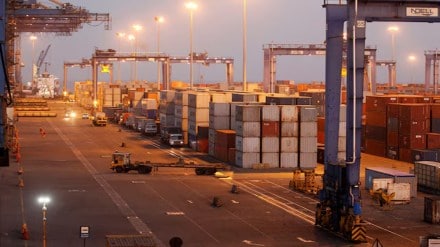By Amitendu Palit
Indian trade policy needs to prepare for navigating complex challenges in 2025. The challenges will arise from a combination of factors. These include President Trump’s assumption of office as the US President; a stagnation in global economic growth and consequent lower demand for manufacturing exports; possibilities of far-reaching political changes impacting trade with major partners; and a lower rate of domestic economic growth.
President Trump’s decisions on tariffs will impact prices of various exports to the US. For India too, the tariffs will be meaningful given that the US is its largest export market. If Trump tariffs are levied on several of the US’ major trading partners, then an interesting scenario will emerge where these partners will explore ways of circumventing tariffs for accessing the US market. The likely outcome, as already demonstrated by China, will be to relocate production to locations from which exporting to the US won’t attract tariffs. India might need to explore similar options too.
Tariffs will impact export competitiveness with US consumers finding the products becoming more expensive. The erosion of market access in the US will be compounded by slower economic growth in many parts of the world and its effect on demand for Indian exports. Some indications in this regard are already visible through lower growth of traditional “hot” Indian exports like gems and jewellery, and petroleum products. More political turbulence, including changes in governments in India’s key export markets in Europe and West Asia, can further affect the prospects of exports. A projected lower level of domestic economic growth will impact capacity utilisation of manufacturing exports, which, as it is, will be impacted by the other mentioned changes.
India’s trade policy will need to adjust according to the challenges. One of the most important goals in this regard should be to make trade policy move out of its excessive focus on protecting interests of manufacturing exports. India’s service exports are performing commendably. It is time that the trade policy and domestic industrial policy work in tandem to encourage more service exports.
In the foreseeable future, service exports are unlikely to encounter the kind of problems that goods exports are facing. Globally, trade is concentrating more among geopolitically aligned blocks. This tendency will increase as international relations become more fragile and contentious. Unilateral protectionism and reciprocal actions in the form of tariffs and non-tariff restrictions are also going to increase. This will variously impact price competitiveness and market access for manufacturing exports. Furthermore, new frontier measures like the Carbon Border Adjustment Mechanism (CBAM) will spring up across the world, hitting carbon-intensive exports like steel and energy products.
India’s focus on manufacturing exports should be selective and on items that can navigate geopolitical currents deftly. Semiconductors, critical minerals, food products, and pharmaceuticals are some of these. Politically, India has worked out alliances with countries with whom it can trade effectively in these items. But non-strategic exports might face access hurdles and start declining. In this regard, trade policy must not be reactive and should take a long-term objective view.
Two specific areas of engagement demand attention. The first of these is with the US. With the US likely to look at trade relations with India exclusively, as it will for all of its partners, India must also do so. While negotiating with the US, defensive interests like recovering Generalised System of Preferences (GSP) shouldn’t be the priority. The US Congress hasn’t renewed the GSP programme since it expired on December 31, 2020. The possibility of it being restored by the Trump administration is remote. Even if it is restored, for India, which was scrapped of the benefit while it existed, getting GSP-like preferential access will entail large market access trade-offs that would stir domestic discontent. India also shouldn’t be obsessed with securing more H-1B visas. The current anti-immigration sentiment in the US is unlikely to see the new government agreeing to a wholesome support of the H-1B scheme. The US big tech’s favourable disposition towards Indian professionals should ensure that H-1B continues to remain a source of mobility for the skilled Indian without any overt lobbying.
With the US, however, India must, in the scope of any likely bilateral trade deal, seek to obtain more support for developing integrated global capability centres (GCCs). GCCs are driving the robust growth in Indian service exports and generating domestic jobs. Global US businesses, such as Microsoft, Deloitte, Citi, Amazon, and Walmart, are running GCCs in India. These hubs have the potential to power India’s services export growth to new heights by exploiting the synergies with local start-ups in various areas.
It is also time for India to work on joining a high-quality rules-based trade framework like the Comprehensive and Progressive Agreement for Trans-Pacific Partnership (CPTPP). The framework will provide deep preferential access to three G7 member markets — Japan, Canada, and the United Kingdom (UK). It will also provide similar access to other CPTPP member markets, like Australia, New Zealand, Mexico, Peru, Chile, Singapore, Brunei, Vietnam, and Malaysia, over and above what India currently has through existing bilateral and regional agreements with some of these countries. The new access can compensate some of the potential access loss in the US market.
The CPTPP is arguably the best example of a 21st century new-generation trade agreement. Its rules will help Indian exports to upgrade and modernise. It will bring new export opportunities, not just for goods, but also for services like financial, business, travel, and miscellaneous, and support further domestic growth of GCCs. Joining the CPTPP should be a priority moving ahead.
The writer is senior research fellow and research lead (trade and economics), Institute of South Asian Studies, National University of Singapore.
Disclaimer: Views expressed are personal and do not reflect the official position or policy of FinancialExpress.com. Reproducing this content without permission is prohibited.
